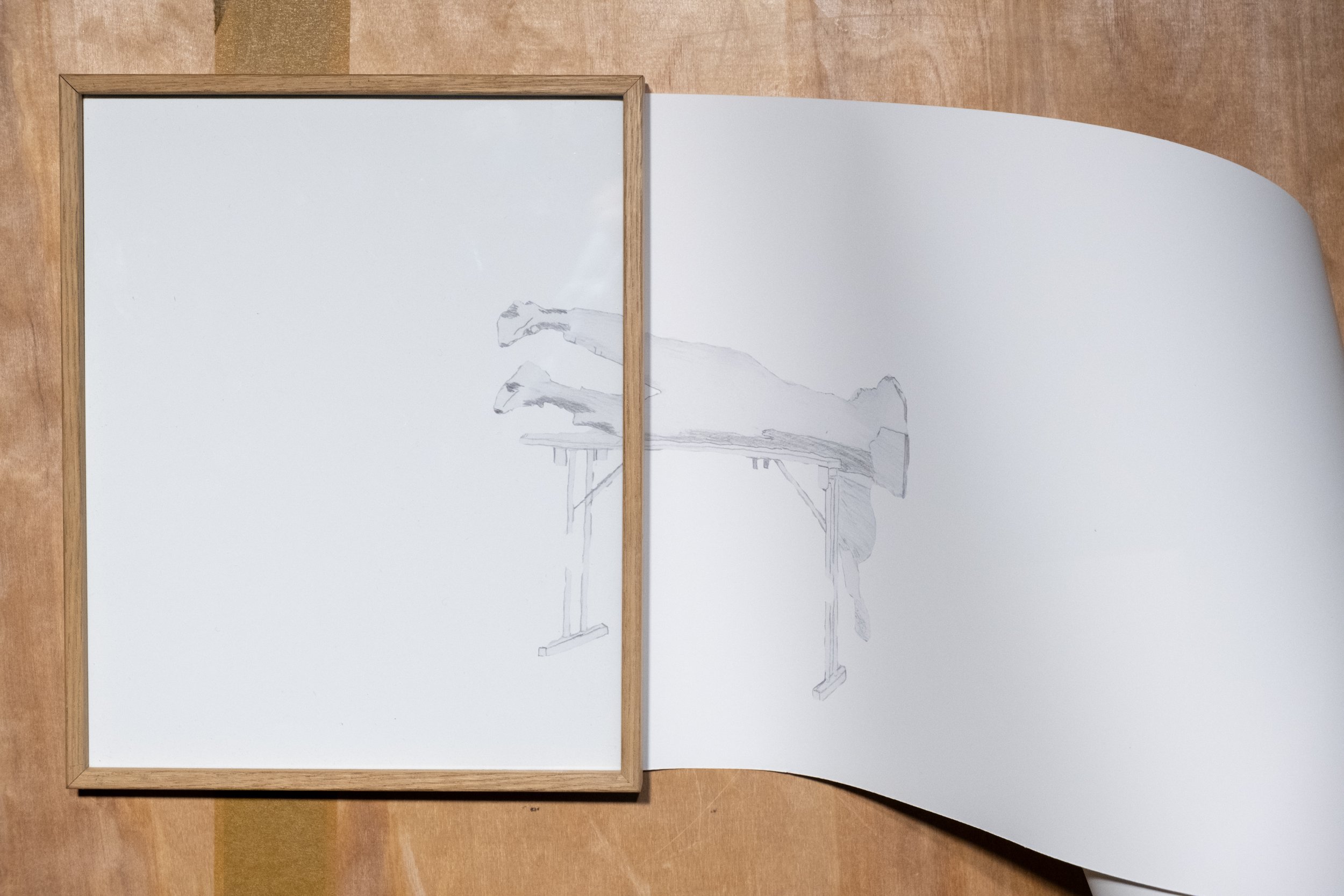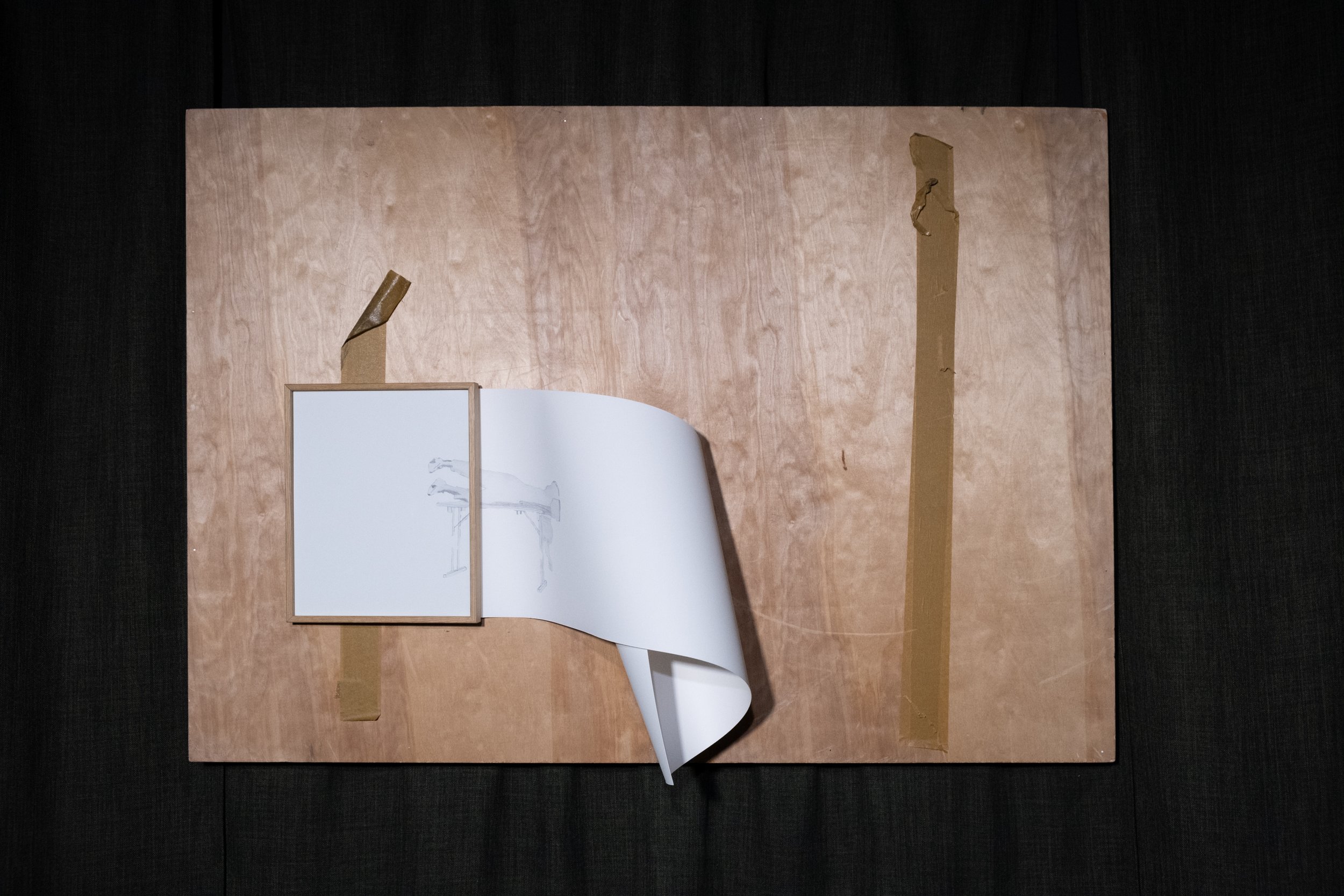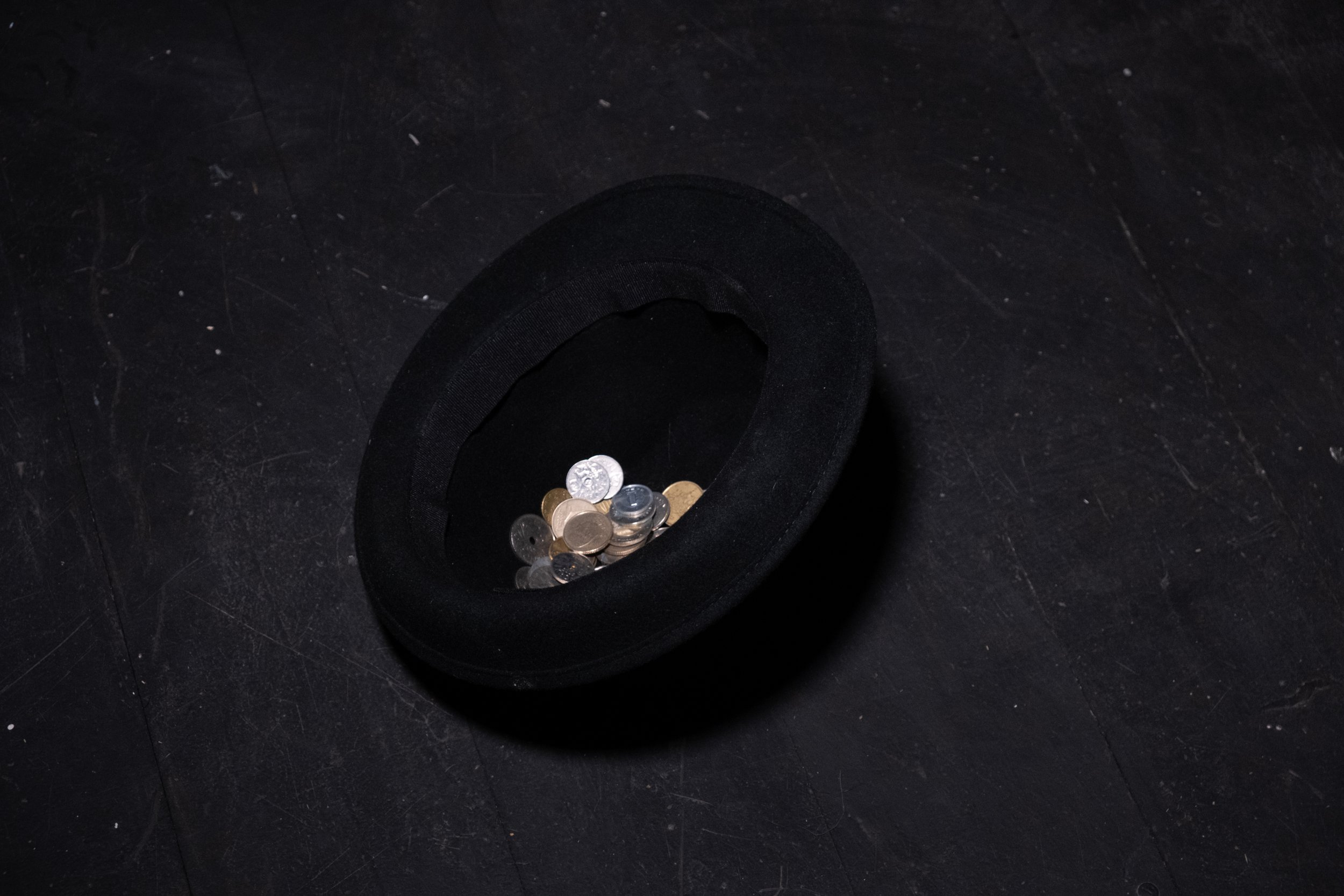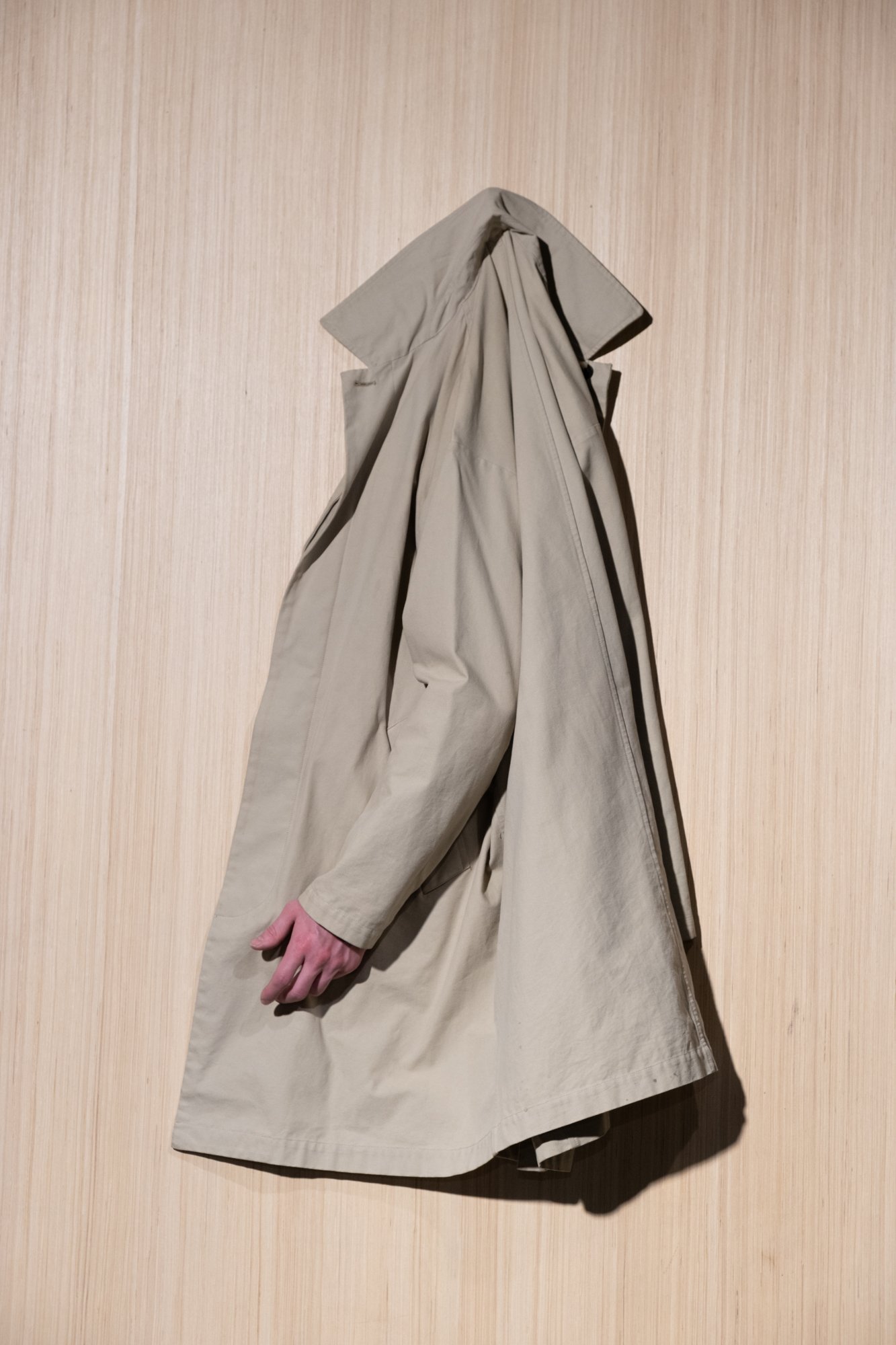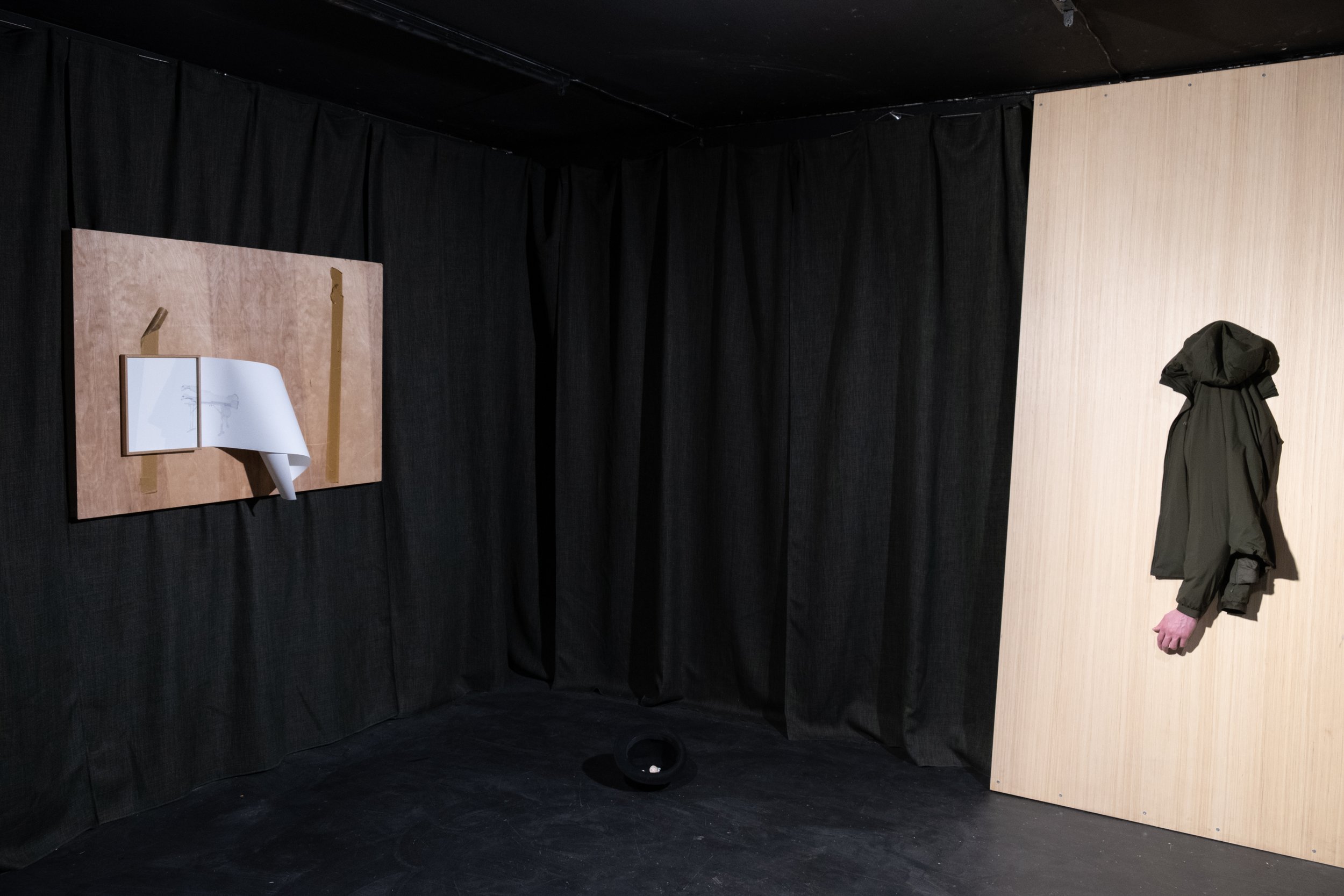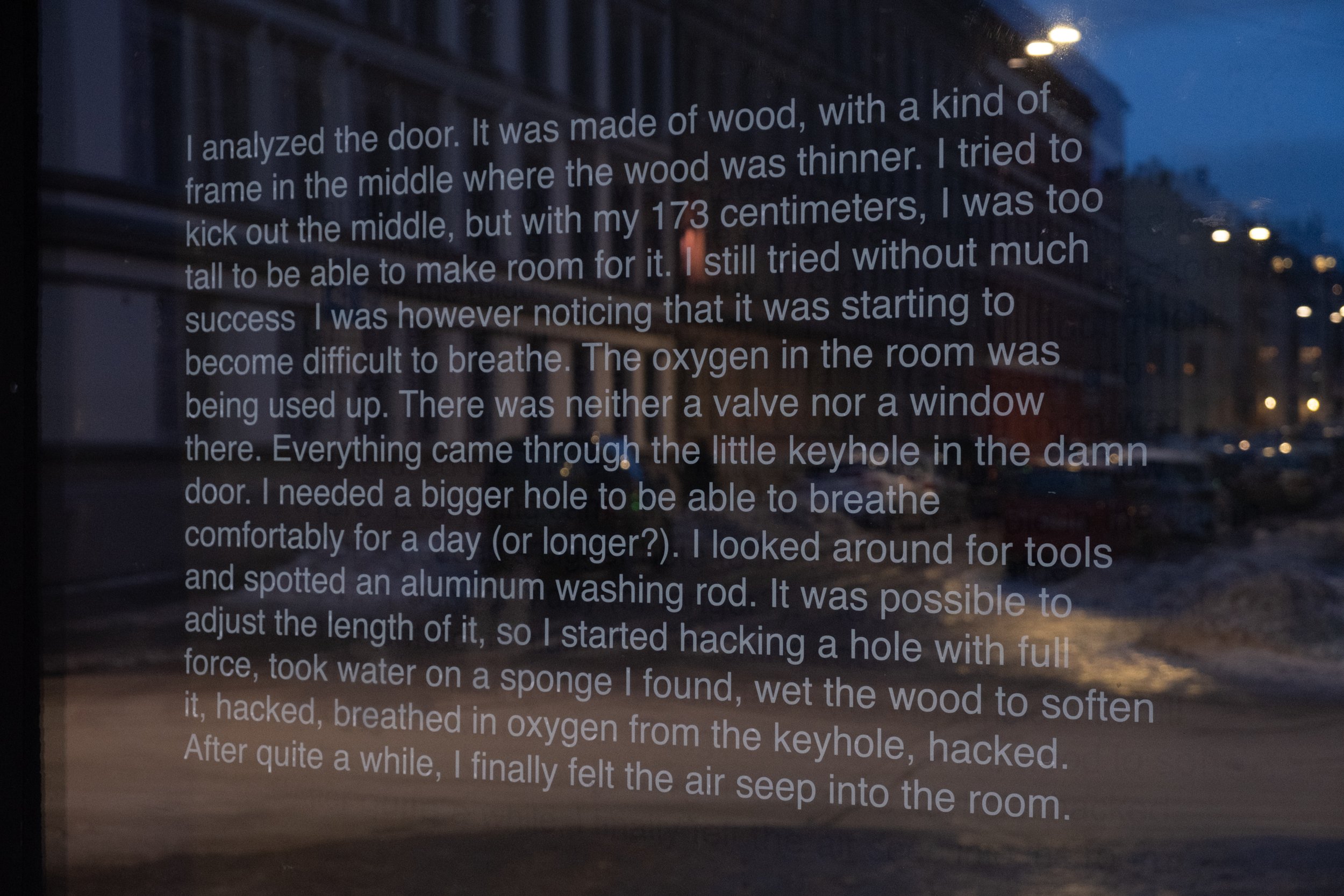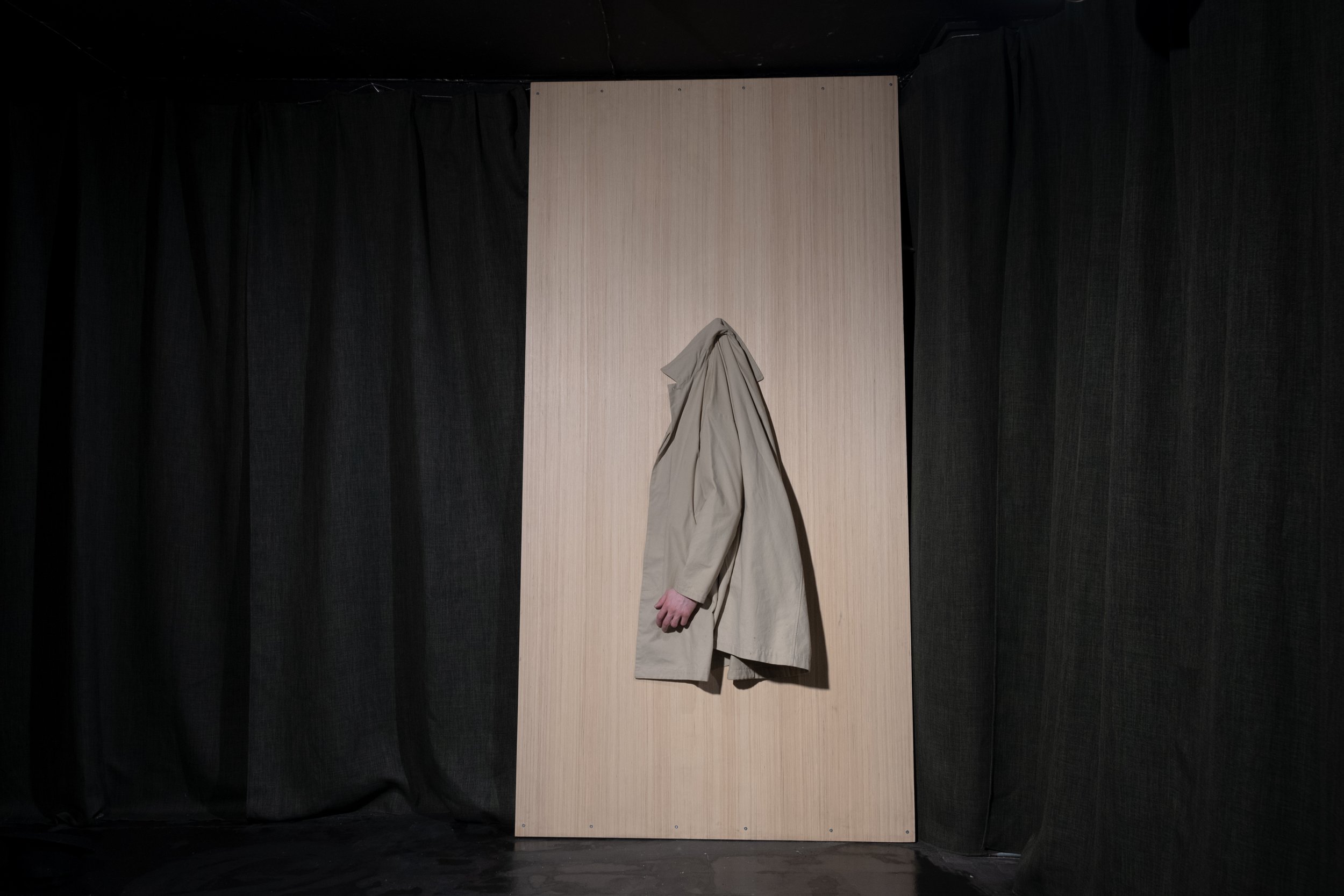Jasper Siverts
9.2 - 25.2 2024
“True Economy” is a pseudo-film about ego-death, commodification and difference, that is activated by a performer during the opening hours of the gallery. The film takes its starting point from K4 as a screening venue, and the spectatorship often associated with such hybrid spaces: something in-between a gal lery and a black box. This exhibition, or screening, attempts through simple gestures, to create a kind of hybrid-film, where the format itself, and its parameters, make up the scenography for a performative cine matic space. A space in which the social codes of the exhibition and the audience become protagonists in the production of meaning. The camera becomes the literal room. A room of surveillance, representation and “worker performance”. This is done as a means of reflecting on the ethos of the commodity, the art object and the exhibition ritual in the age of post-Fordism; where personal gestures, services and data alike are commodified and extracted; where the public and private spheres have long since merged into one. The performer enacts a useless labor that cannot be quantified or preserved, they stay an ephemeral object on the limit of the machine of financial speculation.
The gallery stores fetishized objects that are subsequently circulated through the market, and conserved for posterity in dark storage halls and freeports, unavailable to the public. It is a neutral room, devoid of content, so that it can be filled with whatever dead objects one might desire. So that it can be an event that happens everywhere, at all times. Deterritorialized yet fascistoid, hellbent on conserving certain iden tities and objects deemed valuable.
What is the body in this totally commodified and liquidated landscape, where all gestures and statements are goods for sale? It must be a body without beginning nor end: A sort of schizo-person without any stable identity: That acquires and sheds its image just as easily. A decentralized subject that might also be utilized to envision a radically different world. The flip-side of the prime subject of late capitalism becomes a subjunctive to the stripping away of the situated, the territorial. This exhibition envisions what Gerald Raunig refers to as a “dividual” reality, where this schizophrenic subject is set free from the capture of the individual, and rather becomes something dividual. This dividual envisions networks of active conjoining and disjoining, collective gestures that reshape the hierarchies of our bodies. The arm in “Hedda, Emma, Ole, Anna, Isak” is cut off from the rest of the body, becoming an autonomous entity whose only claim to identity is its always changing title and the jacket it is wearing; the commodity.
“True Economy” thus employs forms of presence that depart from the performance medium’s often event-based and identitarian tools. This is a form of presence, and a politics of visibility that is not founded on subjectivation or identity, that does not easily represent itself, but is nonetheless undoubtedly there. Remembering Xavier Le Roy’s seminal work “Self Unfinished” (1999), this film might be thought of as “Unself unfinished”, never not self-less yet pointing towards a rupture of subjectivation, an unmaking of the economical human.
Jasper Siverts (Born 2000), based in Oslo. is a visual artist working within the field of choreography, employing movement, live actions and films to bring about notions of collectivity, togetherness and alter established frames surrounding spectatorship and attention. Taking existing material as his starting point, reenacting both objects and events, he sees his practice as an interrogation of art history and politics of representation, and subsequently the art-object and the gallery format. This is often expressed in choreographic works with long durations exhibited in a gallery, attempting to discuss notions of hybdrid temporality, objectification, post-fordist labour and conservation


